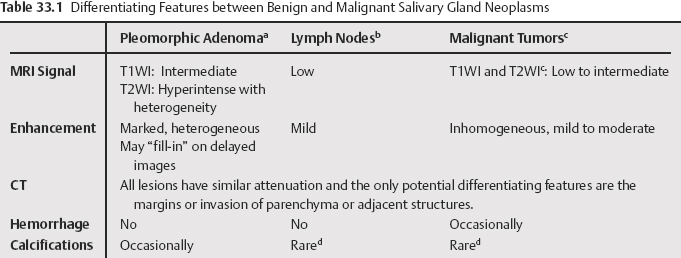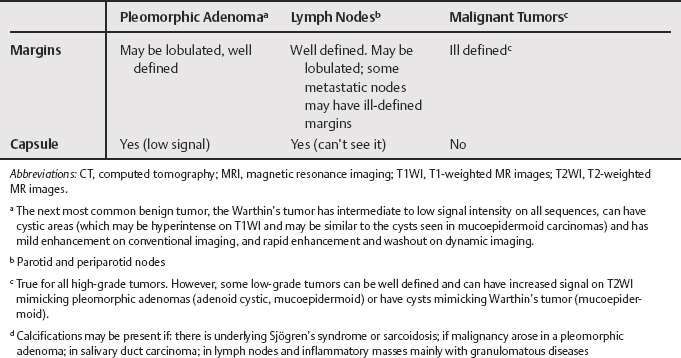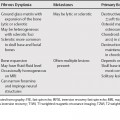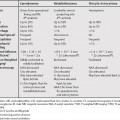33 The parotid gland is the most common site of salivary gland neoplasms; most (80 to 85%) are benign. Although the incidence of tumors in the submandibular and sublingual glands is lower, greater than 50% of neoplasms in these glands will be malignant (up to 80% of sublingual tumors). Fifty to 80% of minor salivary gland tumors are malignant, and malignant minor salivary gland tumors are most common in the soft palate followed by the paranasal sinuses, the nasal cavity, and the tongue. Approximately 90% of parotid tumors arise in the superficial lobe. Pleomorphic adenoma is the most common tumor in the parotid gland and the most common benign tumor in all salivary glands. It has certain characteristic imaging features (Table 33.1). However, imaging cannot definitively differentiate benign from malignant tumors, and various malignancies can occur related to pleomorphic adenoma. Low-grade malignancies can have imaging features similar to benign tumors. Warthin’s tumors are the next most common benign tumors; they have cystic and solid components, may be bilateral in 10 to 15% of cases, and the solid components have intermediate to low signal on all sequences and can have mild enhancement. The most common malignancies are mucoepidermoid carcinoma (most common malignancy in the parotid) and adenoid cystic carcinoma (most common malignancy in other salivary glands). Lymph nodes are located in and around the parotid gland and can also be involved by pathologic processes. Non-neoplastic and inflammatory lesions can also occur.
Salivary Gland Lesions
Stay updated, free articles. Join our Telegram channel

Full access? Get Clinical Tree







